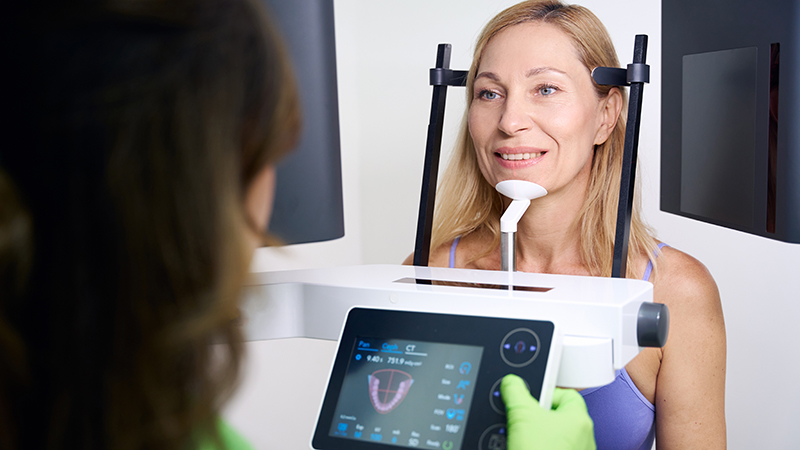
Although traditional X-rays have served dentistry well, they also have limitations. There is no way for it to display depth, hidden structures, or the relationship between teeth, bone, nerves, and sinuses. The cone-beam computed tomography (CBCT) scanner provides an accurate three-dimensional image that can only be obtained with CBCT.
In CBCT scans, the machine rotates around your head in a smooth motion while emitting a cone-shaped beam of X-rays that captures multiple angles of each image. It only takes 17 to 20 seconds for this process to be completed. Data collected can be reconstructed using sophisticated software into a 3D digital model that can be rotated, viewed from all angles, and analyzed.
Through volumetric imaging, we are able to examine your dental anatomy in ways that were previously impossible. 3D datasets are helpful for using cross-sections, measuring distances precisely, identifying nerve pathways, determining bone density, and revealing structures that can't be seen with radiographs.
The level of detail provided by CBCT imaging is invaluable for complex dental procedures. We can assess bone volume and density, locate nerves and sinuses, and determine optimal implant placement with millimeter accuracy when planning dental implants. With greater accuracy, we are able to achieve higher success rates and better long-term outcomes.
CBCT imaging also enhances the planning and execution of numerous procedures, such as wisdom tooth extraction, root canal treatment, jaw surgery, and orthodontics. We can achieve predictable results, avoid complications, and work more efficiently with 3D visualization.
Scanning procedures are quick, comfortable, and non-invasive. Within seconds of positioning yourself in the scanner (typically standing or sitting), the machine completes its rotation. The rapid scan time prevents movement from affecting image quality.
While CBCT does involve radiation, it uses significantly lower doses than medical CT scans while still providing exceptional diagnostic information. Our strict protocols ensure scans are performed only when their diagnostic benefits clearly justify them.
CBCT offers a wide range of benefits. The same scan can be used for many diagnostic and treatment planning purposes, potentially reducing the need for multiple types of imaging. This efficiency benefits both your time and your overall radiation exposure.
Using this technology enhances communication as well. We can show you the 3D images, helping you understand your anatomy, the nature of any problems, and exactly how we plan to address them. With this level of clarity, collaboration and transparency are easier to achieve.